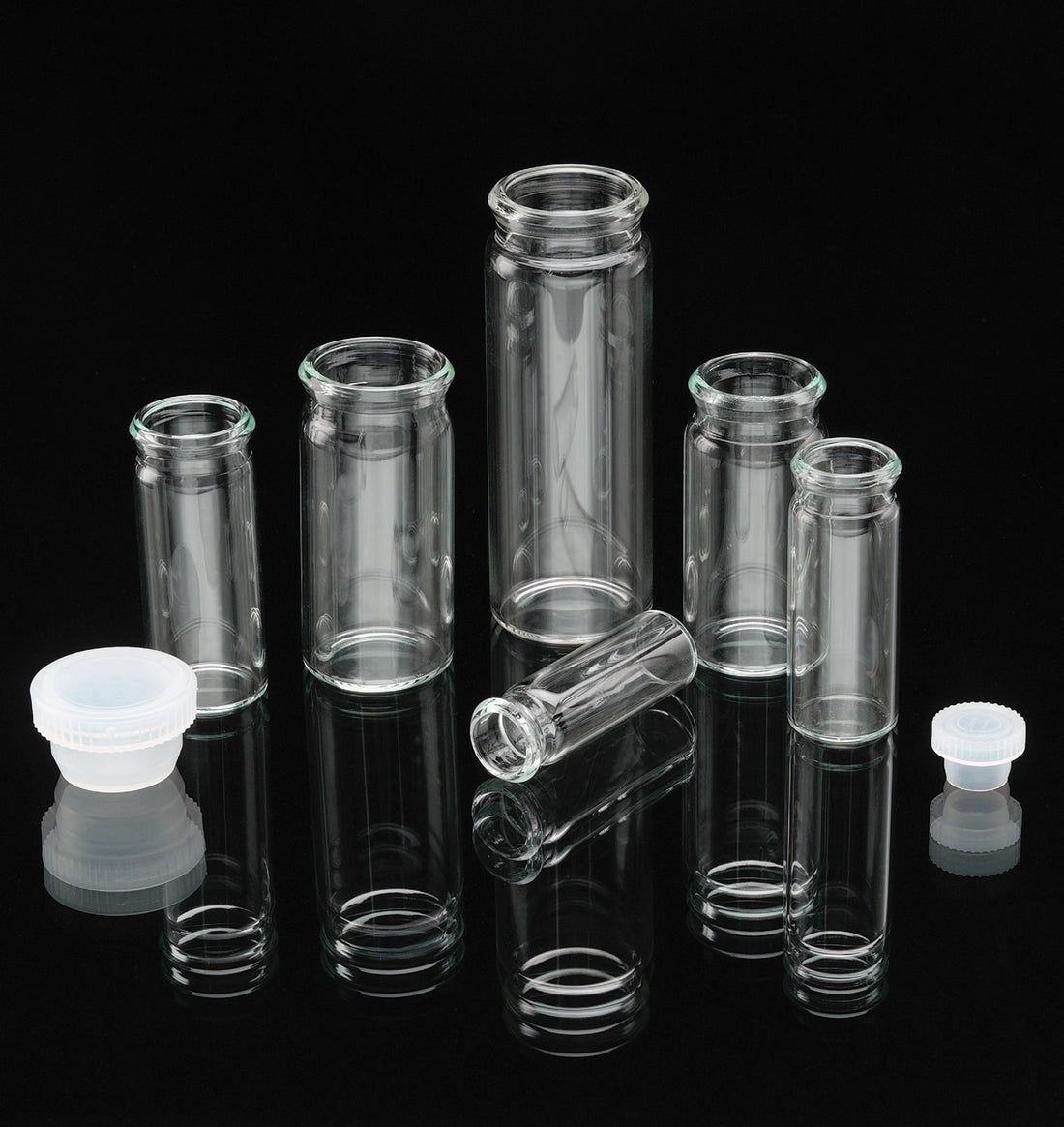
How to Choose the Right Glass Vial for Your Application
Share
Selecting the perfect glass vial for your product might seem straightforward, but with so many options available, it’s essential to choose the right one based on your industry needs, product type, and storage requirements. Whether you're in pharmaceuticals, cosmetics, or environmental testing, the right vial can make all the difference in ensuring your product’s safety and functionality. Here’s a guide to help you make the right choice.
1. Consider the Industry
The first step in choosing the right vial is to consider the specific industry you’re operating in. Each industry has unique requirements that should influence your decision.
- Pharmaceuticals: Vials must meet strict standards for safety, sterility, and chemical resistance. Type I Borosilicate Glass is often the top choice for its durability and non-reactive properties.
- Cosmetics and Beauty: Aesthetic appeal is key in this industry. Colored vials like cobalt blue or amber are often used for essential oils or perfumes to protect against light degradation while offering an attractive design.
- Environmental Testing: If you’re dealing with hazardous materials or sensitive samples, EPA vials are ideal due to their ability to handle harsh chemicals and maintain sample integrity.
2. Match the Vial to Your Product Type
Next, think about the specific product you’re packaging. Is it a liquid, a powder, or a gas? Each product type has different packaging requirements, and glass vials offer several customizable features to match.
- Liquids: For liquids like medications, essential oils, or serums, choose vials that have secure sealing mechanisms, such as screw thread vials with tamper-evident caps, to prevent leakage and contamination.
- Powders and Solids: Vials with wider openings are often better for powders, allowing easier access. Be sure to select the right neck finish to accommodate scoops or applicators.
- Sensitive or Light-Sensitive Products: If your product is sensitive to light or air, amber or colored vials provide the extra protection needed to preserve product integrity over time.
3. Storage and Environmental Requirements
Another critical factor is the storage environment your vial will be subjected to. Will it need to withstand extreme temperatures, UV exposure, or corrosive materials?
- Cold Storage: For products that require refrigeration or freezing, make sure the glass vial can withstand temperature changes without cracking or losing integrity. Borosilicate Glass is an excellent choice due to its thermal stability.
- UV Protection: For products that degrade with light exposure, opt for amber or green glass, which provides a natural barrier to UV rays.
- Chemical Resistance: If you're storing reactive or corrosive substances, Type I Borosilicate Glass offers superior chemical resistance, ensuring that the contents remain unaffected by their container.
4. Customization Options
Customization can help you find the perfect vial for your specific needs. Custom screen printing, neck finishes, and closure types can all add extra functionality to your vials. For example:
- Orifice Reducers: Ideal for liquid products like essential oils or perfumes, these limit the amount of liquid dispensed, giving users more control.
- Custom Screen Printing: For products that need branding, logos, or safety information, screen printing offers a clear, professional finish directly on the vial.
- Tamper-Evident Closures: For pharmaceuticals or health-related products, tamper-evident caps provide an additional layer of security and assurance for your customers.
Conclusion
Choosing the right glass vial involves balancing the needs of your industry, the type of product you’re packaging, and the specific storage requirements. Whether you need a vial that offers chemical resistance, UV protection, or a sleek design, there’s a perfect glass vial for every application. By carefully considering these factors, you can ensure that your product is stored safely and effectively, enhancing both its performance and presentation.
